The Great Dane dog breed is the largest and most imposing because of its height and gentle disposition. Thanks to its kind demeanor and undying loyalty, this dog is commonly known as a “gentle giant,” making it perfect for a house pet. In the Canvas Personalized, you will discover the dog breed overview, including the key traits, health issues, and caring tips.
Whether you are a first-time owner or a seasoned dog lover, the Great Dane is a breed that will steal your heart and bring joy to your home.
1. The Great Dane Dog Breed Overview
Great Dane Traits
| Origin | Germany | Good With | Children, other dogs & cats; families |
| Dog Breed Group | Working Dog of Guardian Dog | Temperament | Gentle, friendly, outgoing, playful, and protective |
| Common nicknames | German Mastiff / German Boarhound | Energy Level | Average |
| Height | 28-32 in | Shedding | Seasonal |
| Weight | 110-175 pounds | Tendency to Drool | High |
| Coat | Short-haired and flat | Snore | Low |
| Color | Fawn; black; blue; gray; white | Bark | Low/ When necessary |
| Life span | 7-10 years | Easy To Train | High |
The Great Dane dog breed is a descendant of the ancient Mastiff dog breed. However, they have been bred to be more elegant and suitable for a house pet. The Assyrians spread the breed worldwide through dog trades with the Greeks and Romans. The ancient Greeks and Romans interbred these canines with other dogs and cats. The American Kennel Club (AKC) officially recognized the breed in 1887.

Large and aristocratic, the Great Dane is often called a gentle giant or the “Apollo of dogs.” Even though they are so big, Great Dane puppies are friendly, playful, and great with kids. On the other hand, the owner needs to be ready to pay more to feed and house a dog of this size.
The Great Dane is the most well-respected breed. Despite its massive stature, this dog makes loving companions. The Great Danes have a calm demeanor but retain the courage that made them well-known wild boar hunters. They may not bark much but will protect their family at any cost.
Appearance
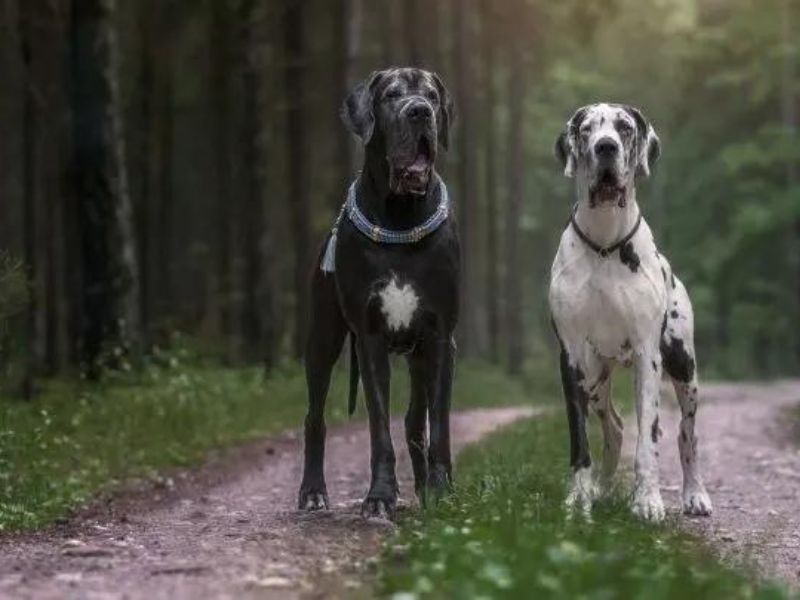
The average height and weight of a male Great Dane are 120 to 200 pounds and 30 to 34 inches, respectively. In contrast, a female one stands between 28 and 32 inches tall and weighs between 100 and 130 pounds.
Some dogs may be unusually small or huge. Moreover, the Great Dane is well-known for its long, thin, rectangular head and deep eyes.

A Great Dane dog breed usually has a fawn coat and a black snout, but the actual coat coloration can vary widely. Some dogs’ coat colors and patterns range from black, black, and white to blue, brindle, fawn, and white.
Great Danes are the largest and tallest dogs in the world, according to the American Kennel Club. Great Danes are large, powerful dogs that exude an air of dignity and mischief.
Temperament/Personalities
A purebred Great Dane is known for having one of the friendliest personalities of any dog breed. The “gentle giant” reputation is well-deserved since they are calm, social, and playful. Despite its massive size, this dog makes excellent family dogs because they are often quite tolerant of children and other animals. Keep an eye on any kids at home since your Dane is big enough to trip them up easily.
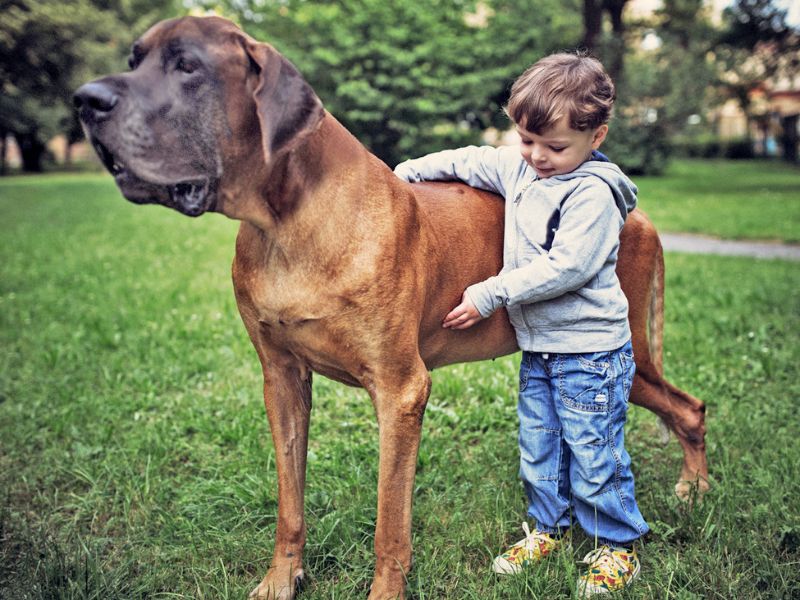
Great Danes are known for being calm but were initially bred to be guard dogs. Because they are so protective, they make great family pets. The Great Dane prefers to hang out with his human family. They have a high tolerance for social interaction and will gladly welcome people, including strangers and kids.
Although Great Dane puppies are generally easygoing, they benefit greatly from early socialization. They will develop into an all-around canine companion and will gladly welcome people, including strangers and kids. It would be best to take your dog to parks for strolls around the neighborhood to meet neighbors and other dogs.

When properly trained, the Great Dane dog breed may be gentle and loyal companions in both the house and the public sphere. In general, Great Danes have outgoing dispositions and get along well with other pets, making them an excellent choice for families with multiple pets.
Best For
Great Danes are the best choice for experienced pet parents who can spend most of their time at home with their new addition. They may thrive in small homes or apartments as long as they have sufficient space to move around.
2. What To Look For When Caring For The Great Dane Puppies?
Health Issues
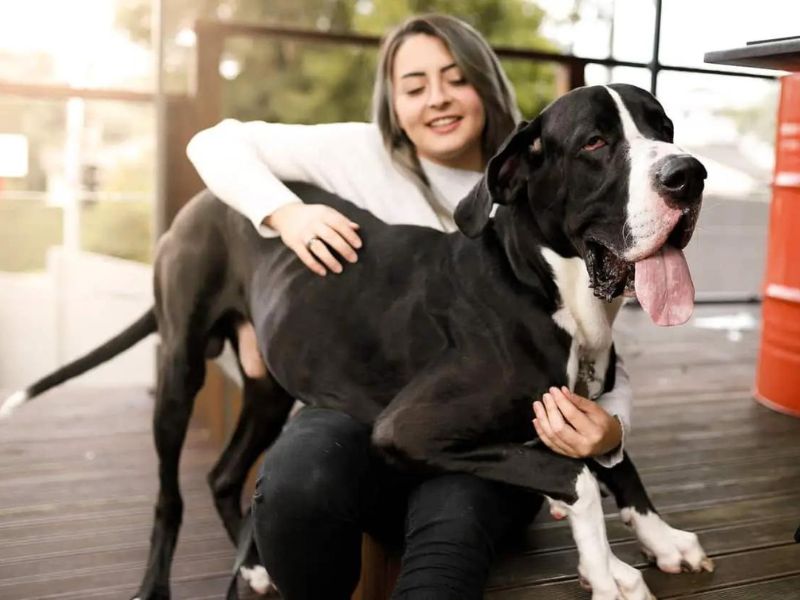
Great Dane puppies don’t tend to live as long as some other breeds because they only live for 7–10 years. While the Great Dane dog breed tends to be in good health overall, it is susceptible to a few common canine diseases. If you find any symptoms, it’s vital to be aware of these diseases and check with your vet immediately.
Heart Issues
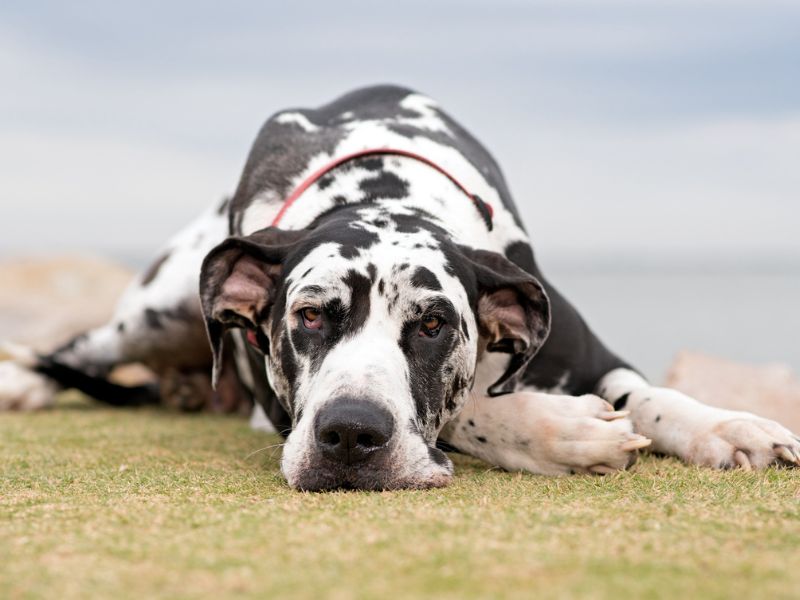
Compared to other dog breeds, Great Danes are more likely to develop heart disease. This is why many reputable breeders have started doing echocardiograms on their breeding dogs to reduce the chance that this defect will be passed on to their puppies. The common ages for these examinations are 2, 4, and 6 years old.
Bloat
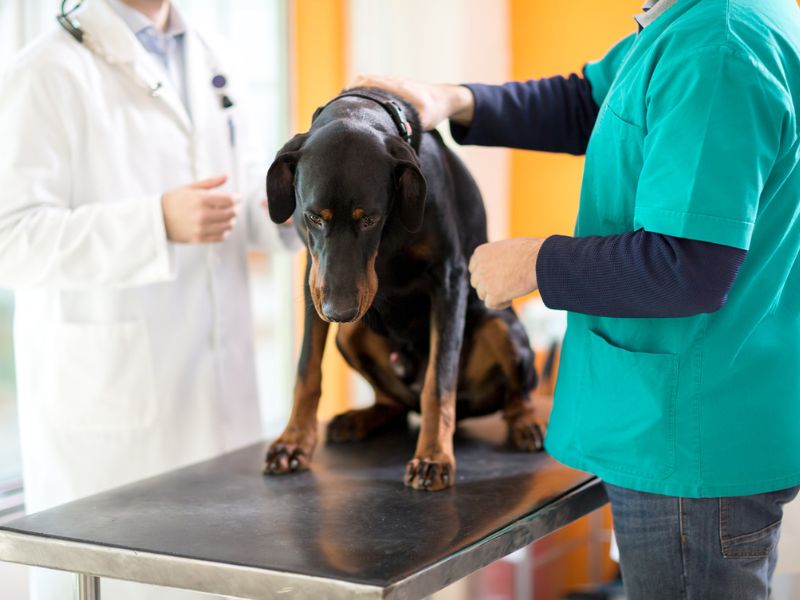
This potentially fatal stomach ailment, known medically as gastric dilatation-volvulus (GDV), is more prevalent in giant, deep-chested breeds like the dog Great Dane. Dogs with GDV have a twisted stomach and appear to have a swollen belly, disorientation, restlessness, and foaming at the mouth because they can’t urinate or defecate.
If you suspect your dog has GDV, check with your veterinarian.
Hip Dysplasia

Lameness and pain in the hips are symptoms of hip dysplasia. It is a hereditary disorder characterized by abnormal development of the hip joint. Many treatment options include diet, exercise in moderation, physical therapy, and medication.
Autoimmune thyroiditis, hypothyroidism, and eye disorders are more common in the Great Dane dog breed. The pet owner should check with their vet for guidance on how to best protect and care for their dog.
Caring Tips
Great Danes typically shed heavily; a well-brushed coat will keep them looking great for years. Moreover, they don’t take a lot of time to groom, so brushing them once a week is ideal. You should brush your hair with a brush that has strong bristles and shampoo as needed.
When your Great Dane is still a puppy, get it acclimated to being brushed and examined. Your Great Dane will benefit from less frequent bathing if you regularly brush its coat to maintain health and cleanliness.
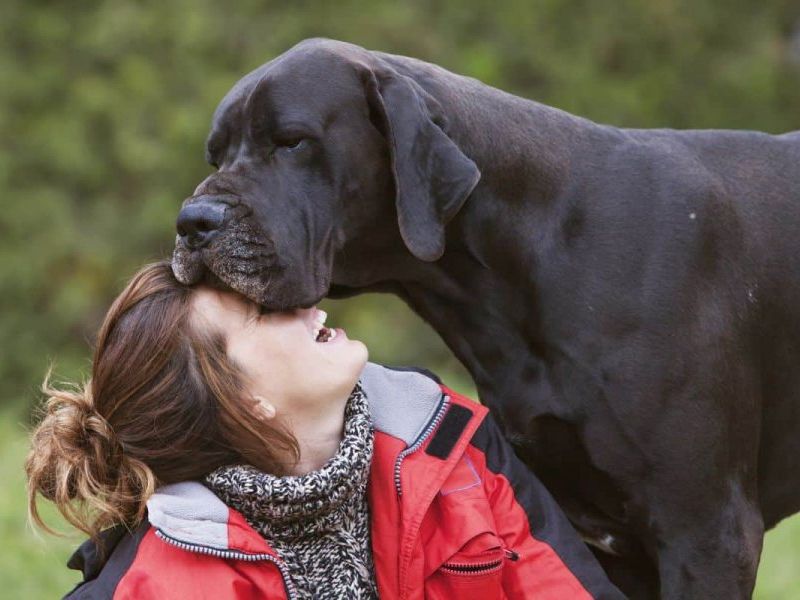
While brushing your dog, you should inspect the skin, nose, mouth, eyes, hands, and feet for any sores, rashes, or symptoms of infection, such as redness, tenderness, or inflammation. Having a regular, thorough checkup every week will help you catch any health issues in their earliest stages.
You should trim them once or twice monthly to avoid unpleasant tears and other problems. There are blood vessels in a dog’s toenails, so if you cut too deeply, your dog might bleed and not want to have its nails trimmed again. Get advice from a vet or groomer if you don’t know how to properly cut a dog’s nails.
You must also brush your dog’s teeth at least twice weekly to prevent tartar accumulation and bacteria. If you care about avoiding gum disease and bad breath, brushing your teeth twice daily is optimal.
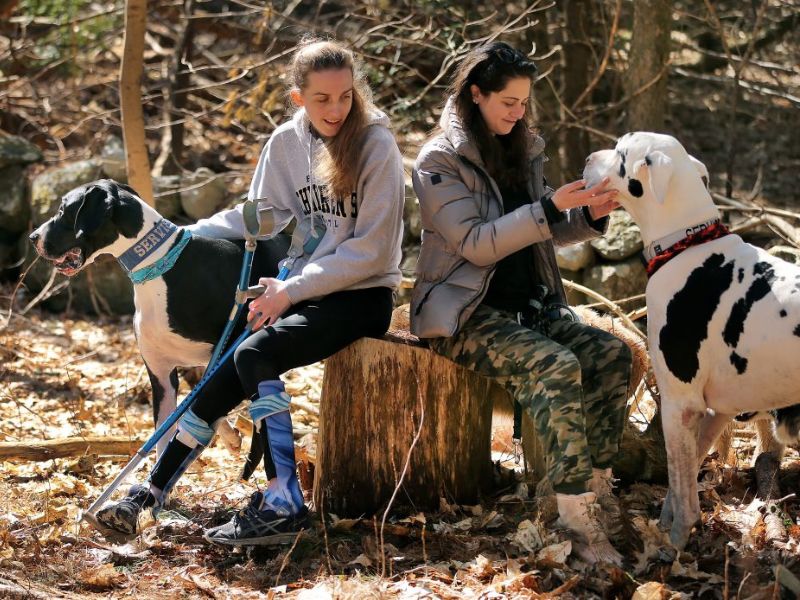
They shouldn’t be left outside in the winter, especially in colder climates, due to the risk of frostbite. Adult Great Danes require 30 to 60 minutes of daily exercise depending on their age and degree of activity.
>>>Discover more essential info about dog caring tips to keep your dog healthier and happier!
Training
Your Great Dane will surprise you with how smart it is, but once training starts, you should be ready for it to be stubborn. Sit, stay, lie down, and come when called are all commands a puppy should learn soon.
Teaching them as pups is easier since you can easily control them. In contrast, when they’re fully grown and weigh as much as you do, it will be hard for you to teach them. Your dog will respond best to training that involves rewarding with favorite foods, toys, and praise (aka positive reinforcement dog training tips).
Crate training is an excellent method to prevent your Great Dane from having accidents. If you start crate training early, do not confine your dog for long periods. Except for a while they are sleeping, they shouldn’t spend more than a few hours a day there because it is not a jail.
The Great Dane needs formal obedience training and enough socialization time to thrive. Introduce them to new people and other dogs, or take them for walks and send them to puppy class. Learning the basics and preventing undesirable behaviors would be a great way.
>>>It would be best to learn how to potty train a puppy if you have a new Great Dane puppy at home!
What To Feed A Dog Great Dane
A Great Dane puppy‘s diet is extra important because they grow quickly. In most cases, you should feed them puppy food formulated for large breeds. The amount of food you offer them varies drastically according to their age and gender. If you want specific advice on what to feed your dog, you should talk to a vet or nutritionist.
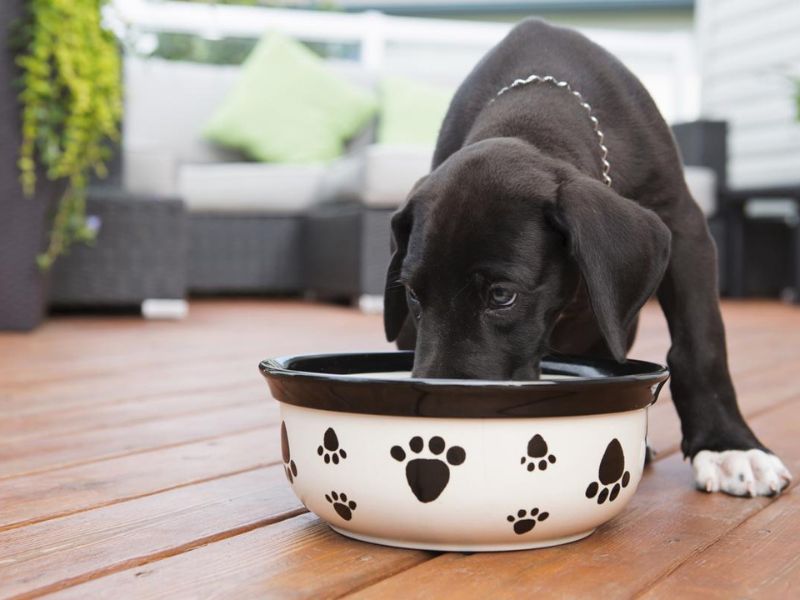
To make sure the food you buy is complete and balanced, the standardized daily quantities should follow the Association of American Feed Control Officials (AAFCO):
- 3 to 6 months: four to eight cups for males and three to six cups for females.
- 8 months to 1 year: Five to eight cups for female dogs. Six to ten cups for male dogs
- Adults: Six to eight cups for female dogs and eight to ten for males.
It’s ideal to continue feeding your Great Dane puppy the same food it had been eating at the breeder’s house for the first few weeks after you bring it home. Keep an eye on the calorie intake from the treats you give during training to maintain a healthy weight.
>>>If your Great Dane dog has any symptoms of allergy, you should take care of them with these dog foods for skin allergies!
Ideal Living Environment
Is it necessary to have a sizable home to care for a Great Dane dog breed properly? Great Danes can adjust to city life and even do well in an apartment if you are home with them most of the day. Ensure that you have a suitable facility to meet your dog training requirements.
A large yard isn’t necessary as long as they receive enough exercise (two or three daily walks should do it). While it’s true that a large dog would require a lot of square footage in a small apartment or house, the dog will likely adapt just fine if you do.
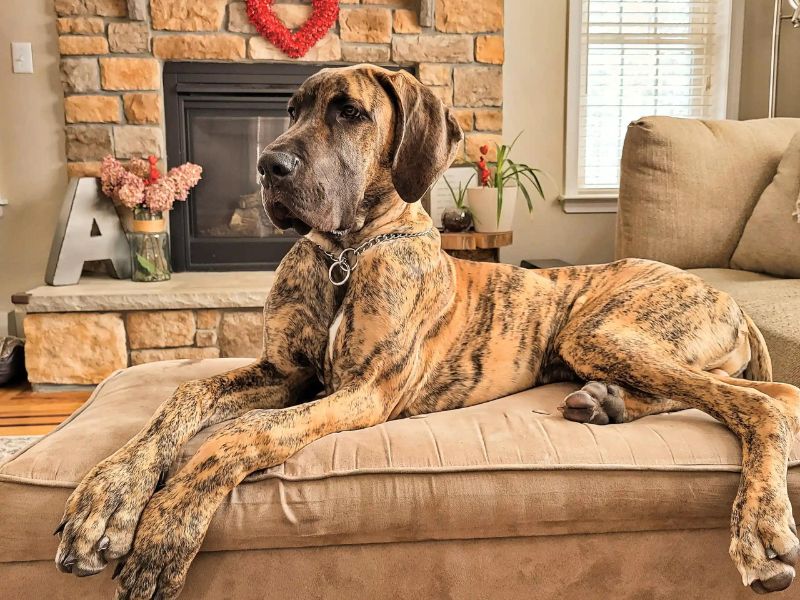
Great Danes frequently “lean” toward their human companions out of affection, which can be dangerous around kids and infants because the dog could easily knock them down. So remember to keep breakables out of their reach and keep an eye on them when they are around your children.
3. Adoption For A Dog Great Dane
Adopting Great Dane puppies can vary from $600 to $7000 compared to the most popular breeds like Golden Retrievers and Labrador Retrievers, which are pretty pricey. The cost can vary depending on the breeder, the color of the dog’s coat, and other factors.
Most of the time, adopting a Great Dane from a shelter or rescue group costs much less than a breeder. Most puppies cost $400 to adopt, with the average price hovering around $200.
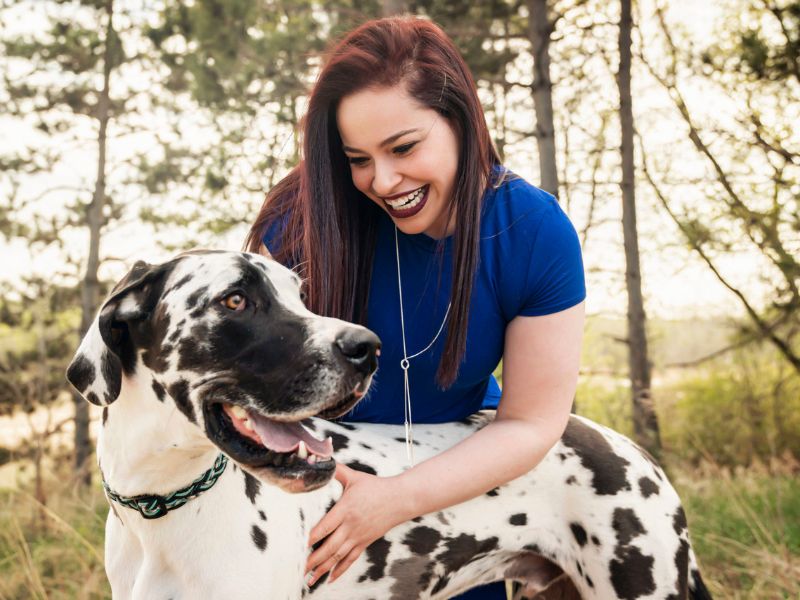
You should expect to pay anything from $2,000 to $5,000 for a healthy, purebred Great Dane since most popular dog breeds fall within this price range. Remember that the initial investment in a dog Great Dane is only a fraction of the typical cost of caring for one. Feeding, veterinary care, training, and other expenses should also be considered.
4. Other Fun Facts
- The 3.66-foot, 155-pound Great Dane named Zeus from Otsego, Michigan, set a new Guinness World Record for “Tallest Dog Ever (Male)” in 201. The average amount of dog food Zeus consumed was 30 pounds every two weeks. He was only 5 years old when he went away in 2014.
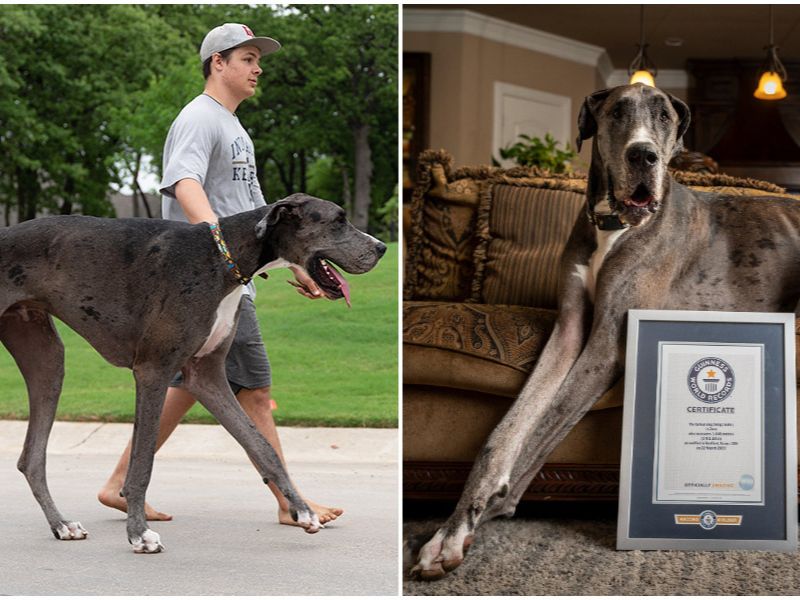
- Great Dane puppies are a popular choice for cartoon dogs. Some well-known fictional examples of the breed are Scooby-Doo, Astro from “The Jetsons,” and Marmaduke.

- Many different types of Great Dane mixes exist, such as the Labrador (a Labrador retriever and a Great Dane mix), the Boxane (a boxer and a Dane), and the Great Poodane (a Great Dane and a poodle) (Dane meets poodle).
>>>Further reading:
- German Shepherd Dog: Background & How to Care For Them
- All About Aussiedoodle Dog: Traits, Health, and Caring
- German Shepherd Dog: Background & How to Care For Them
- The Ultimate Guide to Dachshund Dog Breed: From Traits, Care and Training Tips
The Great Dane dog breed is impressive, thanks to its size, elegance, and gentle nature. Although this breed needs some extra care and attention, it would be a loyal and loving companion that would make a great addition to the family. Check out our essential info about this breed on the Canvas Personalized to decide whether the dog fits your lifestyle.










